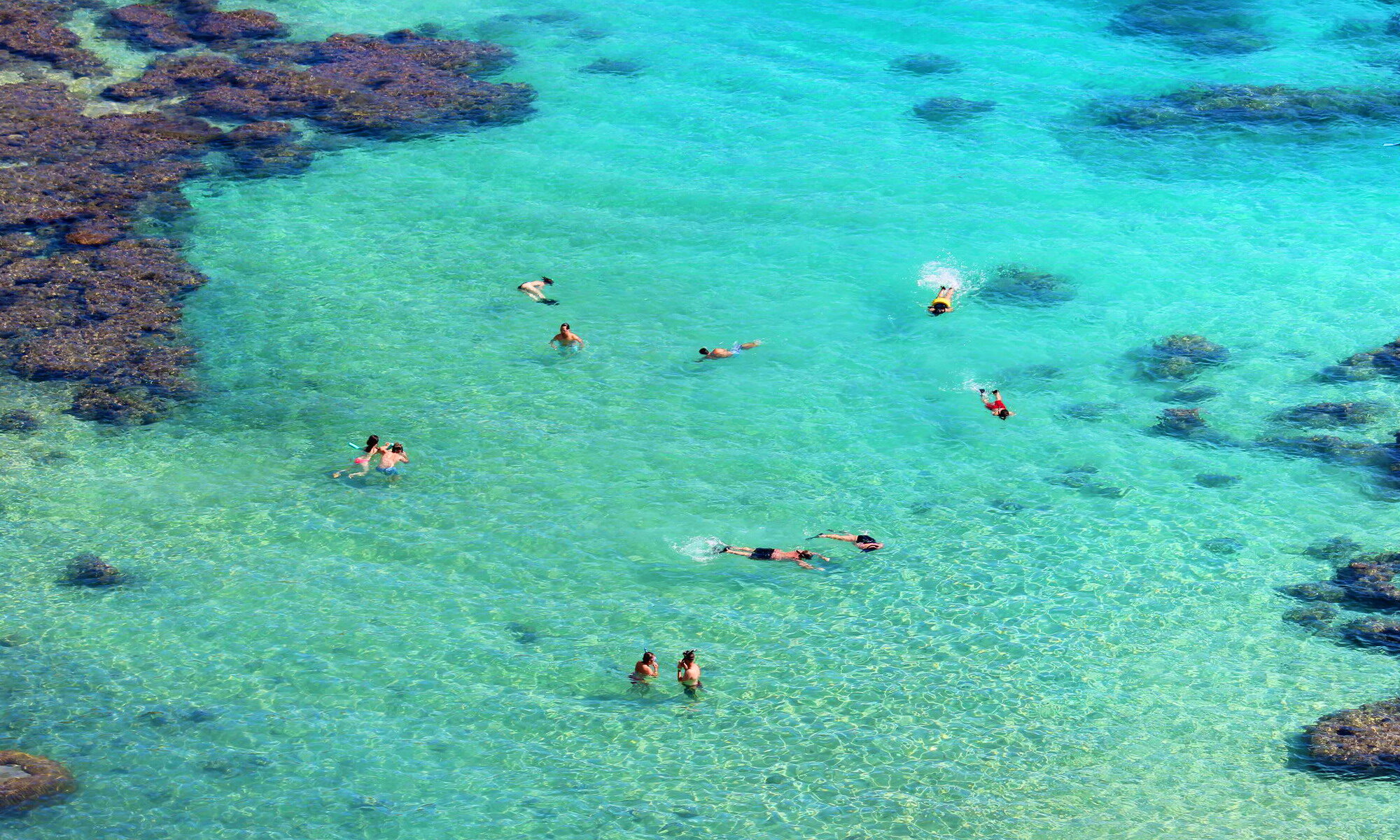The History of Hanauma Bay Nature Preserve: From Its Origins to Today
Hanauma Bay Nature Preserve stands as a shining example of Hawaii’s rich geological history, cultural heritage, and enduring commitment to conservation. Nestled on the southeastern coast of Oahu, this crescent-shaped bay has witnessed millions of years of natural evolution and centuries of cultural significance, making it one of Hawaii’s most iconic natural treasures. Its fascinating past tells the story of volcanic activity, native traditions, ecological abundance, and the ongoing balance between preservation and tourism.
The Geological Formation of Hanauma Bay
Nearly 40,000 years ago, during a period of intense volcanic activity, Hanauma Bay was born. The bay is part of the Honolulu Volcanic Series, which formed after Oahu’s main shield volcanoes, Waianae and Koolau, went dormant. A powerful eruption blasted through the Koolau Range’s southeastern flank, creating a tuff ring crater. Over time, the outer walls of the crater eroded and part of the low-lying rim collapsed, allowing seawater to flood in.
What remains today is a stunning geological amphitheater, where sparkling waters meet steep, volcanic cliffs. The bay’s unique crescent shape creates a sheltered marine environment, making it a natural safe haven for coral reefs and marine life.
Cultural Significance to Native Hawaiians
Long before it became a tourist destination, Hanauma Bay held deep significance for native Hawaiians. The name “Hanauma” combines two words in Hawaiian, “hāna”, meaning bay or valley, and “uma”, referring to the curves or contours of the area. The sheltered waters and abundant resources made it an ideal spot for fishing and gathering.
Hawaiians employed traditional, sustainable fishing practices, such as kapu systems, which imposed restrictions to ensure marine populations thrived. The bay was also a place of leisure for Hawaiian royalty (aliʻi), who found the serene surroundings and pristine waters invigorating.
Changes in Biodiversity and the Impact of Tourism
By the early 20th century, Hanauma Bay’s natural beauty drew increasing attention from outside visitors. However, the bay’s ecosystem began to feel the strain as tourism surged significantly after Hawaii became a U.S. state in 1959. By the 1960s and 1970s, Hanauma Bay had become one of Oahu’s most popular destinations, attracting thousands of daily visitors.
Unfortunately, the growth in tourism came at great ecological cost. The delicate coral reefs suffered damage from trampling, pollution, and sunscreen runoff. Marine life, including once-abundant populations of parrotfish and other reef fish, began to decline due to overfeeding by snorkelers and loss of habitat. By the 1980s, environmental degradation posed a critical threat to this thriving underwater ecosystem.
Conservation Efforts and Policy Evolution
Faced with alarming ecological decline, local authorities and community leaders mobilized to save Hanauma Bay. One of the earliest milestones came in 1967 when the City and County of Honolulu designated it as a protected Marine Life Conservation District (MLCD). This status prohibited fishing and the removal of coral, rock, and marine life. However, without strong enforcement, the bay’s condition continued to worsen.
The real turning point came in the 1990s, when the City and County of Honolulu took decisive steps to regulate human impact. Visitor limits, entrance fees, and parking restrictions were introduced to reduce overcrowding. Perhaps one of the most innovative measures was the mandatory educational video, introduced in 1997, which all visitors must watch before entering. The video teaches best practices for snorkeling without harming the reef and discourages feeding fish.
The entrance fees have furthered conservation efforts, raising funds used exclusively for maintaining and protecting Hanauma Bay.
Significant Milestones and Challenges
- 1990: The founding of the Hanauma Bay Education Program (HBEP), in collaboration with the University of Hawaii, provided critical resources for visitor education and conservation research.
- 2002: Visitor caps were set at roughly 3,000 visitors per day, a stark reduction from the pre-policy peak of nearly 10,000 daily visitors.
- 2016: Hanauma Bay was temporarily closed due to coral bleaching events tied to rising ocean temperatures, highlighting the challenges posed by global climate change.
- 2020: During the COVID-19 pandemic, the bay saw its first extended closure in decades. The absence of visitors allowed marine life to flourish, and coral habitats showed noticeable recovery, sparking renewed conversations about long-term sustainable tourism practices.
Current Preservation Efforts
Today, Hanauma Bay balances natural beauty with careful conservation. Visitor policies remain strict, with mandatory reservations introduced in 2021 to continue managing capacity. Educational programs, both in-person and online, emphasize the critical role every visitor plays in preserving this delicate environment.
Meanwhile, researchers and conservationists are closely monitoring coral health and marine populations, addressing ongoing threats such as climate change and pollution. Efforts to introduce reef-safe sunscreens and expand shade options are steps toward reducing harmful chemical runoff.
Hanauma Bay’s story is one of resilience and reinvention. From its fiery volcanic birth to its modern role as a global model for marine conservation, the bay remains a testament to the delicate balance between human interaction and natural preservation. By learning its history, visitors walk away with a greater understanding of its value—not just to Hawaii, but to the world. This isn’t just a place to snorkel. It’s a treasure to protect, explore, and celebrate for generations to come.
Plan your visit, respect the rules, and immerse yourself in the magic of Hanauma Bay. Every small action makes a difference in preserving this wonder for the future.
